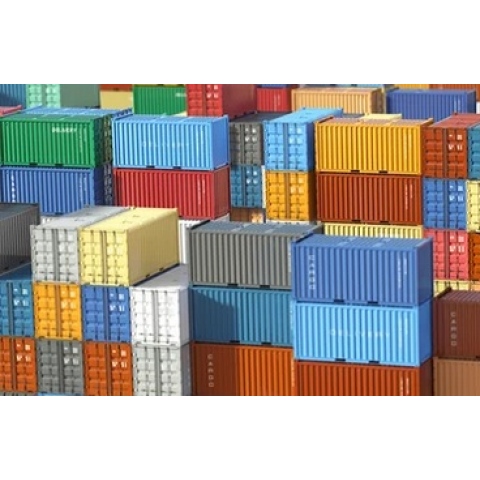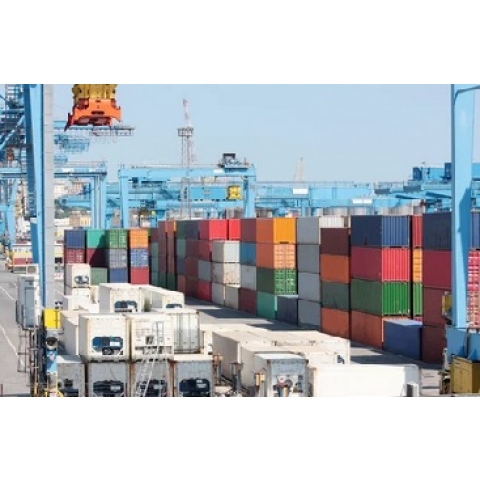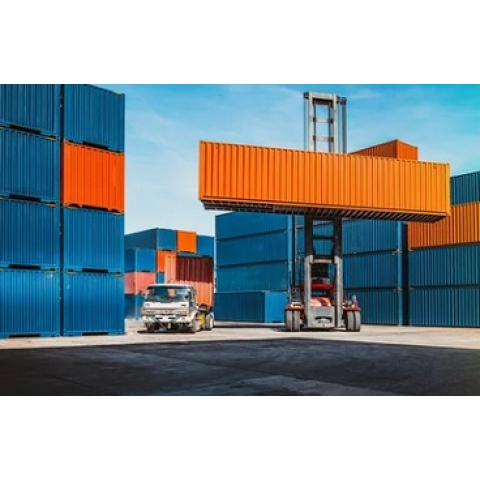Types of sea containers
What are the types of shipping containers and what are they used for?
Shipping containers are a crucial element of global goods transportation, and their variety allows them to be tailored to specific transport needs. Here are the most important types of shipping containers:
Standard containers, also known as dry containers, are the most commonly used in maritime transport. They are enclosed, have ventilation to ensure air circulation, and are available in various sizes, most commonly 20 and 40 feet long. These containers are suitable for transporting a wide range of goods that do not require special transport conditions, such as textiles, toys, machinery, and other dry goods.
Refrigerated containers, known as reefer containers, are equipped with cooling, heating, and ventilation systems that maintain a specific temperature inside the container. They are used for transporting goods that require controlled temperatures, such as food, medicines, or chemical products. Temperatures in these containers can be set from -30°C to +30°C, allowing the transport of both frozen and refrigerated goods.
Open top containers have a removable roof, making it easy to load and unload goods that do not fit through standard container doors. They are ideal for transporting heavy equipment, machinery, wood, and goods with irregular shapes. The roof can be made of canvas or metal, providing flexibility in loading.
Flat rack containers lack side walls and a roof, making them suitable for transporting very large or heavy loads. They have only side walls, which can be folded down, allowing the transport of machinery, vehicles, large cable reels, and other large items.
High cube containers are similar to standard containers but are about one foot taller, providing more internal space. They are 9.6 feet high (approximately 2.9 meters), compared to the standard 8.6 feet (approximately 2.6 meters). They are ideal for transporting lightweight but voluminous goods, such as furniture, household appliances, and more.
Tank containers are designed for transporting liquids, gases, and bulk materials in liquid form. They have internal tanks made of stainless steel and are used for transporting chemicals, fuels, and liquid food products, such as wine or oil.
Ventilated containers have ventilation openings that allow air circulation inside the container. They are ideal for transporting goods that require air circulation, such as coffee, cocoa, and wood. They protect the cargo from moisture and condensation, which is particularly important for organic products.
Insulated containers have walls, floors, and roofs with insulation, helping to maintain a stable temperature inside the container. They do not have their own cooling system, but the insulation helps keep the temperature of the goods stable. They are used for transporting goods that need protection from extreme temperatures, such as during short transports in changing climatic conditions.
Each of these containers is suited to transporting different types of cargo, making them extremely versatile and crucial in the global supply chain.
- Road transport
- Transport Technology
- Logistics, Forwarding, Warehouses, Customs clearance
- Sea, rail and air transport
- TSL - Information worth attention
- Oversized loads
- Transport Europe - key transport directions
- Transport Scandinavia. Transport to Scandinavia
- Transport Balkans
- Transport Asia, transport to Asia
Sea, rail and air transport
Types of sea containers





See also:

Transport from to Serbia. Transport Poland Serbia
Freight transport to and from Serbia plays a key role in European trade, connecting Poland with the Balkans and Southeastern Europe. Serbia, situated on key transport routes, plays an important role as a transit hub.

Transport to Hungary. Transport between Poland and Hungary
Transport to Hungary is an important segment of the international transport market, connecting Poland with Central and Southern Europe. What are the biggest challenges related to the organization of freight transport between Poland and Hungary?

Transport to Latvia. Transport to and from Latvia
The most popular form of transport is road transport to Latvia, which guarantees great freedom of action and a relatively quick delivery time. Thanks to the close distance between Poland and Latvia, deliveries can be made even within one day

Transport Switzerland. Transport Switzerland to and from Switzerland
Transport companies handling transport from and to Switzerland guarantee fast and safe delivery of goods, using an extensive network of roads and motorways in both directions. It is Polish carriers that effectively carry out freight transport to Switzerland

Transport Austria. Transport to and from Austria
Transport to and from Austria is an important, and sometimes even key, segment of international logistics, aimed at ensuring efficient exchange of goods between Poland and one of the key countries of Central Europe, i.e. Austria.

Transport to and from Spain. Transport Spain
Polish transport companies transport meat, dairy products, cereals, and fruit and vegetable products to Spain
Help needed ?
If you have not found the desired freight, an available truck or a suitable transport and forwarding company, or the search results are not satisfactory for you, do not hesitate to write to us to tell what you are looking for. We will send your inquiry directly to transport companies.
Write to us

 pl
pl  en
en  de
de  es
es  fr
fr  it
it  pt
pt  ru
ru  sv
sv 










